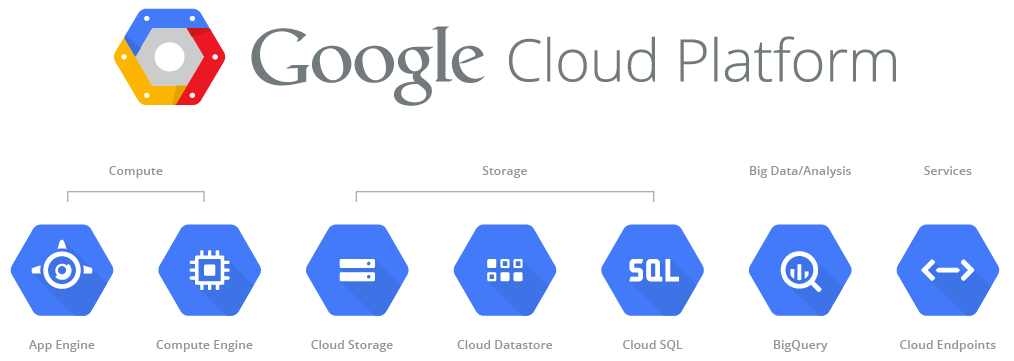 It’s always interesting to hear what experts in technology – not necessarily in 3D printing, but technology as a whole – think about where the industry is heading. Which technologies will last, and which will be so-called flashes in the pan? Which older technologies will become obsolete as they’re replaced by newer developments? What threats and challenges do certain technologies present? And, of particular interest to us here at 3DPrint.com, where does 3D printing fit into it all? Global marketing communications firm Finn Partners, specifically their Technology Practice, recently conducted a survey of 511 IT decision makers in the US to get their take on the current and future state of technology. The responses were…somewhat unnerving.
It’s always interesting to hear what experts in technology – not necessarily in 3D printing, but technology as a whole – think about where the industry is heading. Which technologies will last, and which will be so-called flashes in the pan? Which older technologies will become obsolete as they’re replaced by newer developments? What threats and challenges do certain technologies present? And, of particular interest to us here at 3DPrint.com, where does 3D printing fit into it all? Global marketing communications firm Finn Partners, specifically their Technology Practice, recently conducted a survey of 511 IT decision makers in the US to get their take on the current and future state of technology. The responses were…somewhat unnerving.
“The challenges that I.T. decision makers face each day are truly daunting,” said Sabrina Horn, managing partner and technology practice lead at Finn Partners. “From aging technology infrastructures to cybersecurity threats to the need to keep up with the latest innovations, it’s no wonder we received a lot of scary, uncertain opinions about what lies ahead. But, these findings also highlight the need for technology providers to better communicate the business outcomes they deliver making it a little less uncertain for everyone.”
 Many people don’t spend a tremendous amount of time thinking about the variety of security threats that technology can present, other than general concerns about hacking and identity theft. Finn Partners asked the experts what specific threats concerned them the most, however, and the responses were unsettling. 31% of respondents said they were most concerned about information or data breaches, while 26% listed major service outages as a serious cause of anxiety. Ransomware scared 22%, while 19% were concerned about threats to businesses or government agencies from insiders or rogue employees. DoS (denial of service) attacks and zero day viruses were each reported by 18% as grave concerns.
Many people don’t spend a tremendous amount of time thinking about the variety of security threats that technology can present, other than general concerns about hacking and identity theft. Finn Partners asked the experts what specific threats concerned them the most, however, and the responses were unsettling. 31% of respondents said they were most concerned about information or data breaches, while 26% listed major service outages as a serious cause of anxiety. Ransomware scared 22%, while 19% were concerned about threats to businesses or government agencies from insiders or rogue employees. DoS (denial of service) attacks and zero day viruses were each reported by 18% as grave concerns.
According to Finn Partners, these responses highlight how important it is for business to invest in cybersecurity solutions that offer protection from both internal and external threats, particularly as the Internet of Things grows and an increasing number of devices – like 3D printers, for example – are connected to the Internet.
“As I.T. decision makers continue to face challenges that keep them up at night, these findings help demonstrate the need for continual vigilance in finding ways to look for better I.T. solutions that protect enterprise from outside predators and ever-present zombies,” said Horn.
Potential security threats aren’t the only source of stress for IT decision makers. When asked what their greatest challenges are in terms of being able to meet the needs of the enterprises they represent, respondents indicated that more price/performance options are needed for the services they provide, as well as more built-in training for IT professionals. Particular obstacles include:
- Budget constraints: 21% of respondents
- Disaster recovery/high availability: 16%
- IT skills development and training: 14%
- End user training: 11%
On a brighter note, those surveyed were asked what technologies they foresee providing the greatest advantages to their enterprises over the next two years. Cloud services took a whopping 52% of the vote, and 3D printing was tied for second place, with 23% percent of respondents listing it as the most promising (big data and virtual desktop infrastructure (VDI) also got 23% of the vote). 20% pointed to virtual reality, while advanced machine learning and mobile backend as a service (MbaaS) took 13% and 10%, respectively.
The results differed among larger and smaller companies; for example, 32% of respondents from companies with 500 or more employees listed big data as valuable, compared to 17% of respondents from smaller companies.
The growth of these new technologies, particularly cloud-based services and cloud computing, mean that older forms of technology are going to be falling behind. When asked what technologies they believed would become obsolete in the next two years, those surveyed responded thus:
- Desktop computers: 30%
- Hard disk drives: 28%
- USB flash drives: 19%
- Desktop virtualization: 10%
 Responses varied based on age and, interestingly, gender, with 36% of respondents under 35 predicting that desktop computers will be gone in two years, compared to 26% of those 55 and older. 63% of women believed that at least one of these technologies will disappear in the next two years, compared to 55% of men. Women also showed themselves to be less concerned about ransomware and insider threats than men, while 35% of those 55 and older were most concerned about information and data breaches, compared with 24% of those under 35.
Responses varied based on age and, interestingly, gender, with 36% of respondents under 35 predicting that desktop computers will be gone in two years, compared to 26% of those 55 and older. 63% of women believed that at least one of these technologies will disappear in the next two years, compared to 55% of men. Women also showed themselves to be less concerned about ransomware and insider threats than men, while 35% of those 55 and older were most concerned about information and data breaches, compared with 24% of those under 35.
The survey was conducted between September 6 and 13, with respondents identifying themselves as senior employees with decision-making influence in at least one of the following areas: PCs, laptops or tablets; peripherals (printers, projectors, consumables, etc.); software solutions; servers, storage or virtualization solutions; and other IT services such as technical support, maintenance, repair, consulting, training, and outsourced services.
There are several takeaways from the survey, with major standouts being the importance of cybersecurity and access to the cloud. 3D printing continues to hold steady as a technology that many predict will have a big impact on the future, which isn’t surprising – but it’s always exciting. Discuss in the Tech Survey forum at 3DPB.com.
Subscribe to Our Email Newsletter
Stay up-to-date on all the latest news from the 3D printing industry and receive information and offers from third party vendors.
Print Services
Upload your 3D Models and get them printed quickly and efficiently.
You May Also Like
The Dental Additive Manufacturing Market Could Nearly Double by 2033, According to AM Research
According to an AM Research report from 2024, the medical device industry, specifically in dentistry, prosthetics, and audiology, is expected to see significant growth as these segments continue to benefit from...
Heating Up: 3D Systems’ Scott Green Discusses 3D Printing’s Potential in the Data Center Industry
The relentless rise of NVIDIA, the steadily increasing pledges of major private and public investments in national infrastructure projects around the world, and the general cultural obsession with AI have...
AM Research Webinar Explores Continuum’s Sustainable Metal Additive Manufacturing Powders
Metal additive manufacturing (AM) powder supplier Continuum Powders is working to develop solutions that empower industries to reduce waste and optimize their resources. An independent life cycle assessment (LCA) of...
3D Printed Footwear Startup Koobz Lands $7.2M in Seed Round
California-based Koobz is focused on reshoring the U.S. footwear supply chain with advanced manufacturing processes, including 3D printing. The startup just announced that it has added $6 million to its...

































